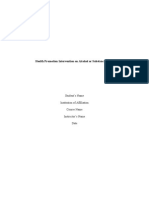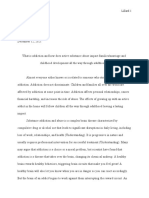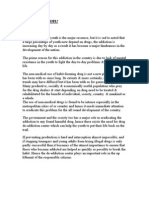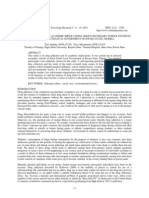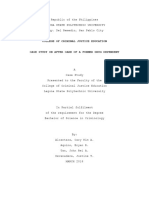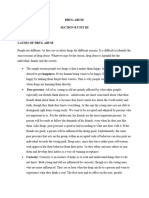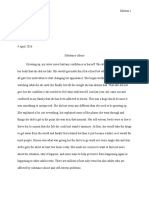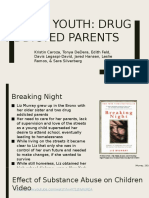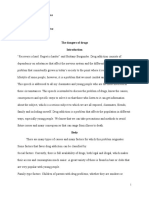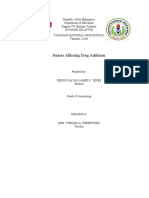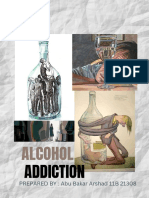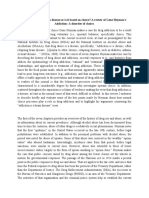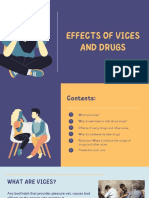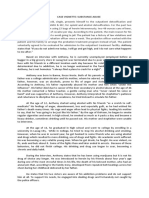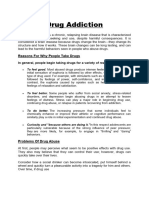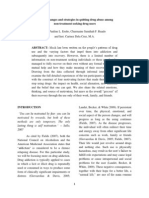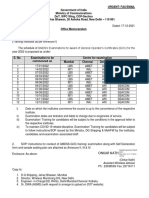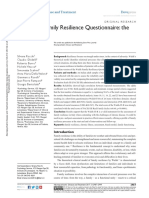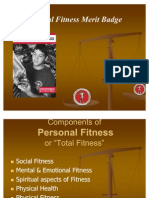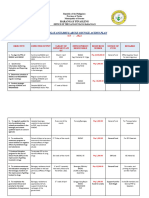Instructions:
1. Read the two cases
2. Answer the discussion Questions
3. Cite References
Description:
Valerie Connell was a 16-year-old girl who was referred to an inpatient residential treatment
program for adolescents with substance use disorders. Val was ordered to participate in
treatment by the juvenile court after she was arrested for opioid possession and distribution.
Val grew up in a western suburb of Chicago. Her father was a musician with a history of alcohol
and marijuana use problems. He left Val and her mother when Val was 5-years-old. Although he
continued to live in the Chicago area, he had only occasional contact with Val. Val had mixed
feelings about her father. On one hand, she was attracted to his glamorous lifestyle:
performing, traveling, and socializing. On the other hand, she resented his decision to abandon
his family when she was so young and harbored anger toward him because of the many times
he disappointed her over the years. "If your own dad doesn't care about you, no one will," said
Val. "I saw myself as pretty worthless-like no one will ever really love me." Val's mother also
had a history of alcohol use. She became pregnant with Val when she was 17, a single parent by
the time she was 22, and a recovering alcoholic by the time she was 26. Mrs. Connell attends
Alcoholics Anonymous meetings to maintain her sobriety and supports herself and Val by
working two jobs. Long hours limit her ability to be involved in Val's school or extracurricular
activities. Although she says, "Val means the world to me-the one thing I live for," she admits
that stress at work and concerns about her ability to pay the bills "sometimes cause me to lose
my temper with her." Val exhibited problems with hyperactivity and oppositional behavior as a
preschooler. "She was a handful," recalled her mother. "She'd always be on the go, she never
wanted to be quiet and listen to me. If I would tell her to do something, she'd ignore me, yell,
or scream." Val's disruptive behavior persisted into elementary school. Her pediatrician
prescribed stimulant medication to manage her hyperactive-impulsive behavior, but it had little
effect on her defiance and tantrums. By the time Val was in the third grade, she was behind her
�classmates in reading and math and had gained a reputation as a troublemaker Val's substance
use began with her transition to middle school. She was referred to a special education
program for children with behavior problems and learning disabilities. She quickly made friends
with several girls who introduced her to smoking (age 12) and marijuana (age 13). Although she
tried alcohol at approximately the same age, she did not like its taste and limited its use to
parties and social gatherings. By the time Val was 14 years old, she was using marijuana several
times per week and drinking five to six sweet alcoholic drinks at parties on the weekends. She
found it relatively easy to hide her substance use from her mother.
Val transitioned to an alternative high school during her freshman year. "All of the kids there
used drugs," Val recalled. Her 17-year-old boyfriend introduced her to prescription pain
medication. Val's favorite combination was OxyContin in the morning followed by Roxicodone
periodically throughout the school day. She quickly became known as the "Oxy and Roxy" girl.
"I'd sleep during class, slur my speech, didn't care about anything," she recalled. "The teachers
didn't say anything to me because I didn't cause trouble, so I kept on going." Val obtained $10
pills from her boyfriend and sold them to classmates for $25, pocketing the profits to support
her own drug use. "I first used heroin with my boyfriend -a different boyfriend -during my
sophomore year," Val reported. "I was afraid of needles so I snorted it. The feeling was
excellent, like all the pain in my life was taken away. I could relax, stay still, and not worry about
school or family. Snorting worked much faster than taking pills and the effects of heroin were
much better." Within 6 months, Val was using heroin approximately four times per day to
sustain its positive effects and avoid withdrawal symptoms such as anxiety, nausea, and
agitation. Her use became expensive and she engaged in prostitution several times to support
her habit. "It might seem crazy, but I'm kind of glad that I got caught," Val reported. "I've been
to the funerals of two friends who died from heroin. My life was on the wrong track." In
residential treatment, Val was prescribed a medication called Suboxone, a combination of
buprenorphine (an opiate substitute that reduces cravings) and naloxone (a medication that
blocks the positive effects of heroin). The physician and psychologist at the residential
treatment facility hope that it will help her reduce her opioid use (see Fiellin et al., 2014). "I'm
�not sure what I'm going to do when I get out of here," reported Val. "My mom wants me to
come back home, but I can't go back. Everyone I know uses. I need a clean break."
Discussion Questions:
1. How might you explain Val's substance use disorder in terms of behavioral genetics and
epigenetics?
2. How might you explain Val's problems with (1) hyperactivity-impulsivity and (2) substance
use in terms of the brain and neurotransmitters?
3. How might you use learning theory to explain Val's substance use disorder?
4. How might problems with cognition or emotion regulation contribute to Val's substance use
problems?
5. How might Val's parents and peers contribute to her substance use problems?
6. How might social-cultural factors contribute to Val's substance use problem?
�Instructions:
1. Read the two cases
2. Answer the discussion Questions
3. Cite References
Description:
Diana was born to swim. Her mother was an Olympic athlete whose relay medley team won the
bronze medal in Atlanta. Today, she is the head swim coach at a Division Il college in Diana's
hometown. Although not a swimmer, her father was a Division I baseball player who currently
works as a personal trainer. Diana also has two older sisters who earned college scholarships
for swimming and diving, respectively. Diana was a healthy baby who enjoyed all of the benefits
of a health-conscious family. Her father, who studied nutrition in college, was extremely
conscientious about his family's eating habits. Diana and her sisters ate a largely vegetarian diet
and received excellent medical care. Her mother decorated Diana's room in an aquatic theme:
blue walls, fish-patterned bedsheets, an octopus pillow, and a dolphin nightlight. Diana began
taking swim lessons at the age of 18 months. She was more agile in the pool than on land. Her
mother would swim with her and her sisters several times per week. Diana also attended her
older sisters' swim lessons and, later in her childhood, she would also attend their swim meets.
Diana began to swim competitively at the age of 5 for a summer aquatic league. By the time she
was 7, she was swimming year-round for a 10 and under recreational team at the YMCA and
winning many of her events. One of the coaches recognized her raw talent and invited her to
join his travel team that practiced at the local college. Diana joined the team several months
later, practiced 5 days per week, and received individual lessons from the head coach. Diana
swam on the varsity team during her freshman year of high school. She excelled in all events,
especially the butterfly. Diana bonded with other girls on the team and had success in the pool
and in the classroom. Now 17-year-old Diana is beginning her final year as a high school
swimmer. A shoulder injury sustained in a car accident earlier in the year slowed down her
stroke and probably eliminated her chances of a Division I scholarship. However, Diana has
visited several Division III schools with excellent swimming programs that would provide her
�with a good education and an opportunity to swim competitively for 4 more years. "Swimming's
not the only thing important in my life, but it's a major part of it." Diana said. "I can't imagine
giving it up just yet."
Discussion Questions:
1. How does Diana illustrate passive gene-environment correlation?
2. How does Diana illustrate evocative gene-environment correlation?
3. How does Diana illustrate active gene-environment correlation?






